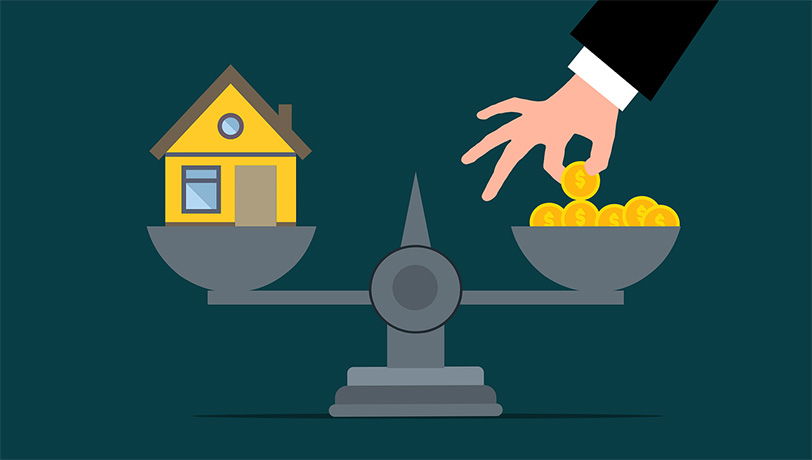If by any chance you own an investment property, yet you want to sell it in the near future, or potentially purchase another one, then you should get yourself familiar with the 1031 tax-deferred exchange.
What does it represent? Namely, it can be defined as a process that enables the owner of an investment property to obtain or sell like-kind property while postponing capital gains tax. Does this sound confusing?
If the answer is yes, then do not worry because you’re not the only one. That’s precisely why we decided to create a detailed guide that will tell you all about the 1031 exchange concepts, rules, and other things. So let’s scroll below together to uncover some interesting facts about it.
Table of Contents
ToggleEverything You Need To Know About The 1031 Exchanges
Let’s Start With The Basics
So what do we know about the 1031 exchange? Namely, it received its name from Section 1031 of the U.S. Internal Revenue Code, which lets people avoid paying capital gain taxes whenever they sell an investment property and then reinvest income from the sale in one or more properties of equal or higher value.
Additionally, section 1031 states that any amount of money you get from the sale of the property stays taxable. That’s precisely one of the reasons why proceeds from the sale are supposed to be transposed to a qualified intermediary, instead of the seller of the property, and then the qualified intermediary transposes them to the seller of one or more replacement properties.
Who is a qualified intermediary? Namely, it represents an individual or firm that agrees to streamline the 1031 exchange by keeping the proceeds involved in the transaction until they can be transposed to the seller of the replacement property. Now, this individual or company cannot have any formal relationship with the parties exchanging property.
Specific Rule For Depreciable Property
It is worth mentioning that there are specific rules when this type of property is exchanged. Namely, it can lead to a profit also known as depreciation recapture, which is normally taxed as ordinary profit.
Generally speaking, if you trade one building for another one, you can prevent this recapture, however, if you decide to exchange enhanced land with a building for unimproved land without any building then the depreciation is going to be recaptured as ordinary income. In order to avoid these types of complications, it would be advisable to hire a professional who is familiar with the 1031 exchanges.
“If you are an investor, then you must definitely get familiar with the 1031 Exchange rules”
What Are The Most Important Rules For A 1031 Exchange?
It’s crucial to gather all relevant facts regarding this before you take any further steps. Although 1031 exchanges are generally flexible in terms of the number of strategies that can be used, there are still some 1031 rules put forward by the IRS that are not very flexible. If you fail to abide by these rules, it can lead to a failed exchange or partial exchange.
A failed exchange means that the whole tax liability is due, while the other one means that only a portion of the tax liability is due. Furthermore, the IRS enabled 1031 Exchanges because it wanted to facilitate constant investment in real estate that occurs because of the company or due to investment purposes.
Additionally, exchange rules concentrate on two elements. First, there isn’t an endless timeline to execute a 1031 Exchange. Second, no “economic benefit” is gained by an exchanger without having paid tax.
Further, the IRS describes “economic benefit” as a decrease in a liability (for instance mortgage and debt payoff) or as getting cash compensations, such as sales proceeds, without matching the corresponding liability with liability on the replacement property.
If you are an investor, then you must definitely get familiar with the 1031 Exchange rules. So if you want to get all your facts straight regarding the 1031 rules, then you should pay attention to these seven key rules. They include:
- The exchange must be determined before a sale happens
- The exchange must be for like-kind property
- The exchange should be of equal or higher value
- The property owner is obligated to pay capital gains or depreciation recapture tax on boot
- The taxpayer that sold and obtained the exchange property should be the same
- The property owner has forty-five days (after the sale) to pinpoint replacement properties
- The property owner has 180 days (after the sale) to complete the exchange
What Else Needs To Be Known?
Where Can You Carry Out A 1031 Exchange?
One of the best things about tax-deferred exchanges is that the renounced property in one state can be normally replaced with investment property in the USA or another state. Moreover, real estate investors frequently exchange property in places like California, New Mexico, and Arizona.
Now, if you’re wondering how you can begin a 1031 Exchange, below we will enumerate some steps that will tell you exactly what needs to be done:
- Existing investment property held one year at least
- Choose an intermediary
- Relinquish current property
- Sales proceeds must go to an intermediary
- You must identify replacements within forty-five days of closing that have the same sales price as the relinquished property
- Close on replacement within six months of the closing
Getting Started On The 1031 Exchange
It would be advisable to first interview a couple of 1031 exchange facilitators before you take any further steps when it comes to selling your relinquished property. So what are you supposed to do?
First, check out their track record just to be sure that they are capable of thoroughly explaining this whole process, particularly if there are some terms that you’ve never heard of before. Besides, it is also essential to have a lawyer by your side to properly investigate the exchange documents that they utilize.
Bear in mind, that these types of facilitators typically charge a small fee and that you shouldn’t opt for the cheapest one because usually, cheaper isn’t better. Once you’ve done your homework, it is time to move on to the next steps, including the following:
- Hire a 1031 exchange facilitator
- Gather all relevant information concerning the relinquished property
- Find out: when it was bought, how much it was purchased for, how it is vested or held, use of the property, equity position and mortgage balance, currently in escrow, and the date of closing
- Thoroughly describe the replacement property by saying: what it is, what is going to be the purchase price, loan amount, and down payment and whether it is in escrow, and who the escrow firm is
1031 Exchange Tax Implications: Debt And Money
If by any chance you have cash left over after the intermediary obtains the replacement property, the intermediary is going to pay it to you in six months. The cash is going to be taxed as incomplete sales proceeds from the sale of the property.
Possibly one of the main reasons why people easily get into trouble during these transactions is failing to take loans into account. Keep in mind, that you should consider mortgage loans or any other debt that is on the property you relinquish, along with the debt on the replacement property.
Additionally, if you do not get cash back, yet the liability goes down, then this will also be perceived as income to you.
1031s For Estate Planning
One of the biggest flaws of 1031 Exchanges is the fact that the tax deferral is going to end at some point, and you will be dealing with a huge bill. But on a more “positive note”, tax liabilities end with death, meaning that if you die, yet you didn’t sell the property you’ve purchased through this exchange, then your heirs will not be obligated to pay the tax for you. In fact, they are going to inherit it at its stepped-up market value.
Moving Into A 1031 Swap Residence
Don’t forget that if you wish to employ the property for which you swapped as your primary or second home, you are not going to be able to do so. How come? Well, approximately fourteen years ago, the IRS set forth a safe harbor rule which stated that it wouldn’t challenge if a replacement dwelling could be defined as an investment property for purposes of Compartment 1031. In order to meet the safe harbor:
- You are supposed to rent the dwelling unit to another individual for a fair rental for two weeks or possibly more
- Your personal use of this unit cannot go beyond the greater of two weeks or ten percent of the number of days during the twelve-month period that the unit is rented at a fair rental
Furthermore, once you’ve successfully swapped one investment property or vacation for another, bear in mind, that you are not allowed to instantly turn the new property into your primary home and reap the benefits of the $500,000 exclusion.
Now, before the law was modified, eighteen years ago, the investor was capable of transferring one rental property in 1031 for another one, then moving into the property for several years, rent out the brand-new property for a certain period of time and eventually sell it, making the use of exclusion of profit from the sale of a principal residence.
Nowadays, if you obtain property in a 1031 exchange and at some point, decide to sell it as your principal residence, keep in mind, that you will have to wait for a long period of time to employ the primary residence capital gains tax break.
“Taxpayers are still able to turn their vacation houses into rental properties and, at the same time, do 1031 exchanges”
1031s For Vacation Houses
Now, you might have heard different stories of taxpayers who utilized the 1031 provision to trade one vacation house for another, possibly even for a home where they wish to retire, yet Section 1031 postponed any recognition of gain.
And then, at some point, they moved into their brand-new house and turned it into their primary residence, and decided to employ the $500,000 capital gain exclusion. Namely, this lets you sell your primary residence and then secure $500,000 in capital gain. The only thing that matters is the fact that you’ve lived out there for at least two years out of five.
These days, taxpayers are still able to turn their vacation houses into rental properties and, at the same time, do 1031 exchanges. For instance, you’ve decided that you no longer wish to use your beach house, so you rent it out for several months, or even one year, and then decide to swap it for another property.
Now, if you get a renter, then you’ve most likely turned your home into an investment property, which means that your 1031 exchange is completely fine.
The Pros & Cons Of 1031Tax Deferred Exchange Rules
Just like with everything else, there are some positive and negative things about them. Below, we’ll discuss both their virtues and their downsides Let us begin with the pros:
- Employing the 1031 tax-deferred exchange rules is to postpone the capital gain taxes
- Vacation houses
- Real estate portfolio diversification
These are the biggest pros of 1031 tax-deferred exchange rules, and keep scrolling to learn all about the cons:
- Developers & flippers, stocks & bonds
- Break the 1031 exchange rules
- Replacement property rush
Make Sure To Schedule A Consultation First
There are so many excellent Exchange Advisors out there, hence it wouldn’t hurt to consider hiring one. Bear in mind, that these experts are here to help you pick and obtain the right 1031 Exchange properties that are going to meet all your demands and needs.
Watch Out For The Scammers
You’ve probably figured out by now that the IRS allows 1031 exchanges, however, there are still some companies and individuals who are doing the same because they have ulterior motives, especially if they tell you to swap vacation houses, so be careful.
Based on the facts that were provided here, it can be concluded that this type of exchange should be used by seasoned real estate investors as a tax-deferred method to build more wealth. If you are one of them, then maybe you should consider this option.


